1. There are ~350 poultry slaughter plants under federal inspection, accounting for over 99% of total poultry slaughter.
2. There are ~1000 livestock slaughter plants under federal inspection.
3. There are approximately 1,950 non-federally inspected poultry and livestock slaughterhouses.
4. Including plants that do further processing, there are more than 5,000 facilities in the meat and poultry processing industry.
5. Slaughterhouses are usually located in areas close to where the animals are raised; Iowa confines the most pigs and slaughters more than 30% of all pigs.
There were 1,012 plants slaughtering livestock under federal inspection as of January 1, 2024. The 11 largest plants slaughtered 46% of total cattle killed. Hogs were slaughtered at 718 plants, with the 14 largest plants accounting for 60% of the total.[1]
About 2% of cattle and about .5% of hogs are slaughtered in non-federally inspected plants.[2] Plants must be federally inspected if they are producing product that crosses state lines.[3]
USDA NASS (2024) Livestock Slaughter 2023 Summary, ISSN: 0499-0544, p. 6.
Livestock Slaughter 2023 Summary, p. 8.
Livestock Slaughter 2023 Summary, p. 66.
There are approximately 1,850 non-federally inspected poultry and livestock slaughterhouses.[1]
These are mostly state-inspected slaughterhouses, along with some small number of “custom-exempt” operations which slaughter animals (exclusively for livestock owners) but do not sell product.[2,3]
All non-federally inspected slaughterhouses are described by the USDA as “small or very small.”[4]
USDA NASS (2024) Livestock Slaughter 2023 Summary, ISSN: 0499-0544, p. 67.
USDA Food Safety and Inspection Service, State Inspection Programs (2023).
https://www.fsis.usda.gov/inspection/state-inspection-programsLivestock Slaughter 2023 Summary, p. 66.
USDA Food Safety and Inspection Service, State Inspection Programs (2023).
Four states slaughter ~46% of all broilers.[1]
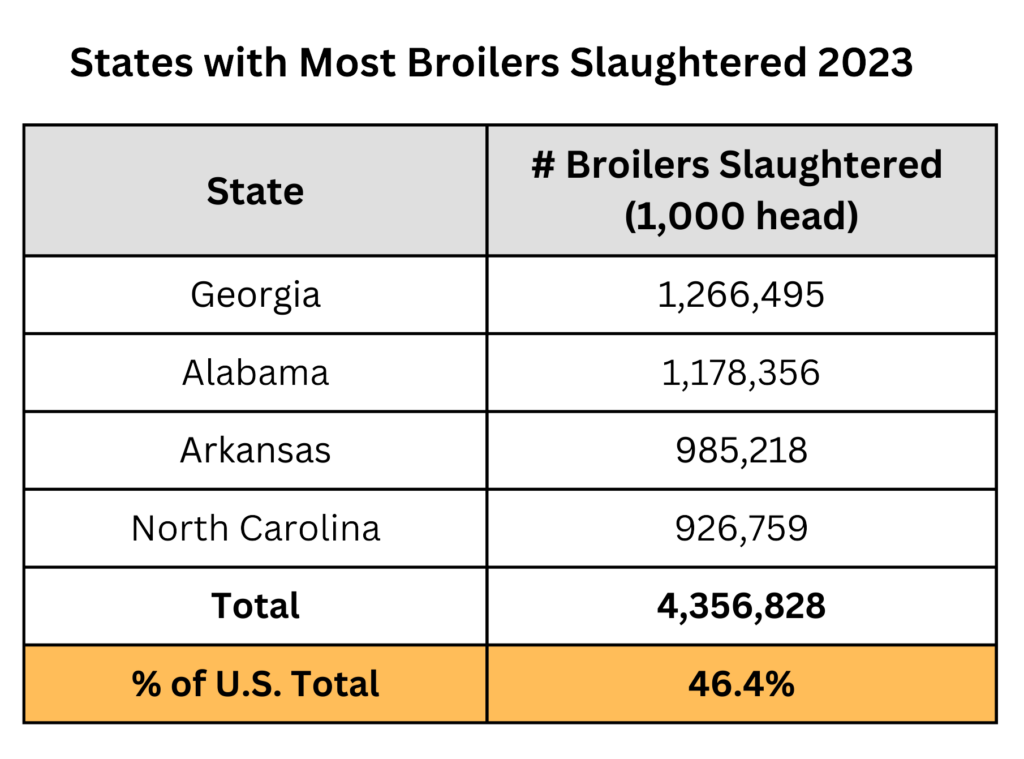
Four states slaughter ~46% of all turkeys.[2]
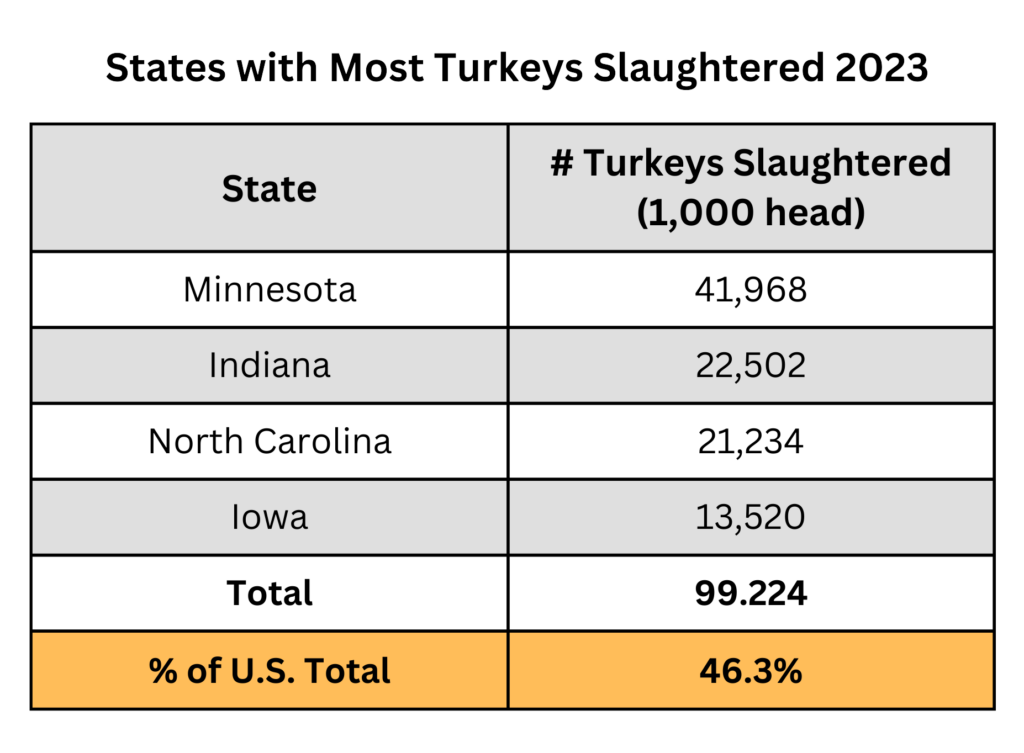
Four states slaughter ~57% of all pigs. Iowa accounts for more than 30% of the slaughter.[3]
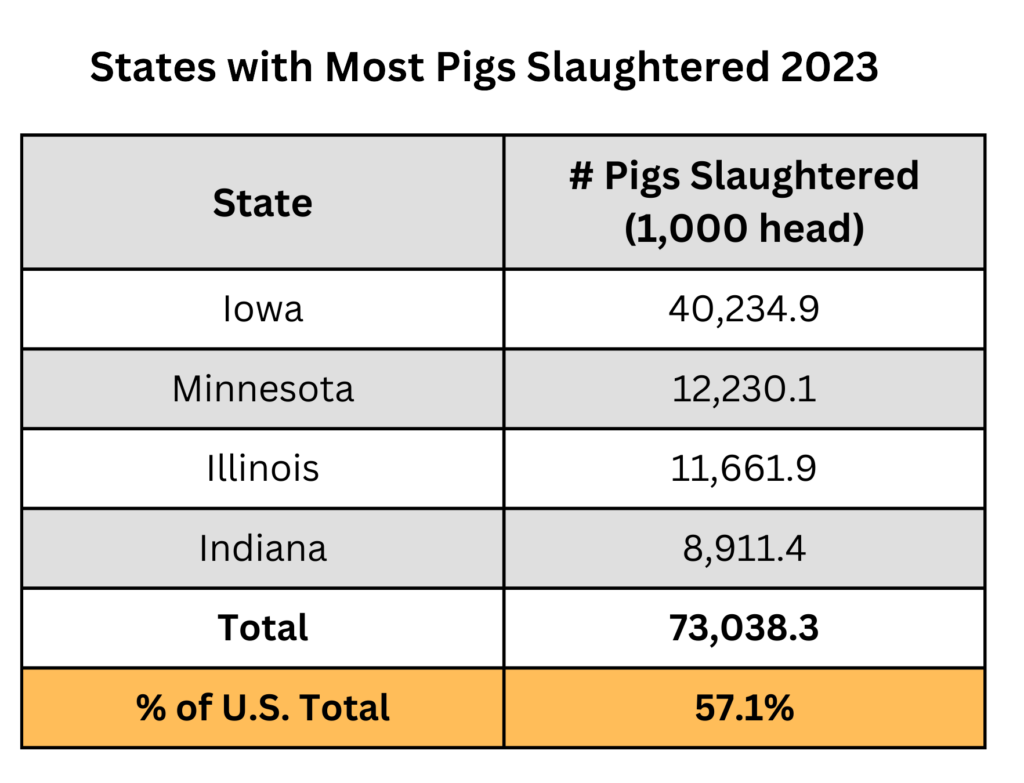
Four states slaughter ~66% of all cattle.[4]
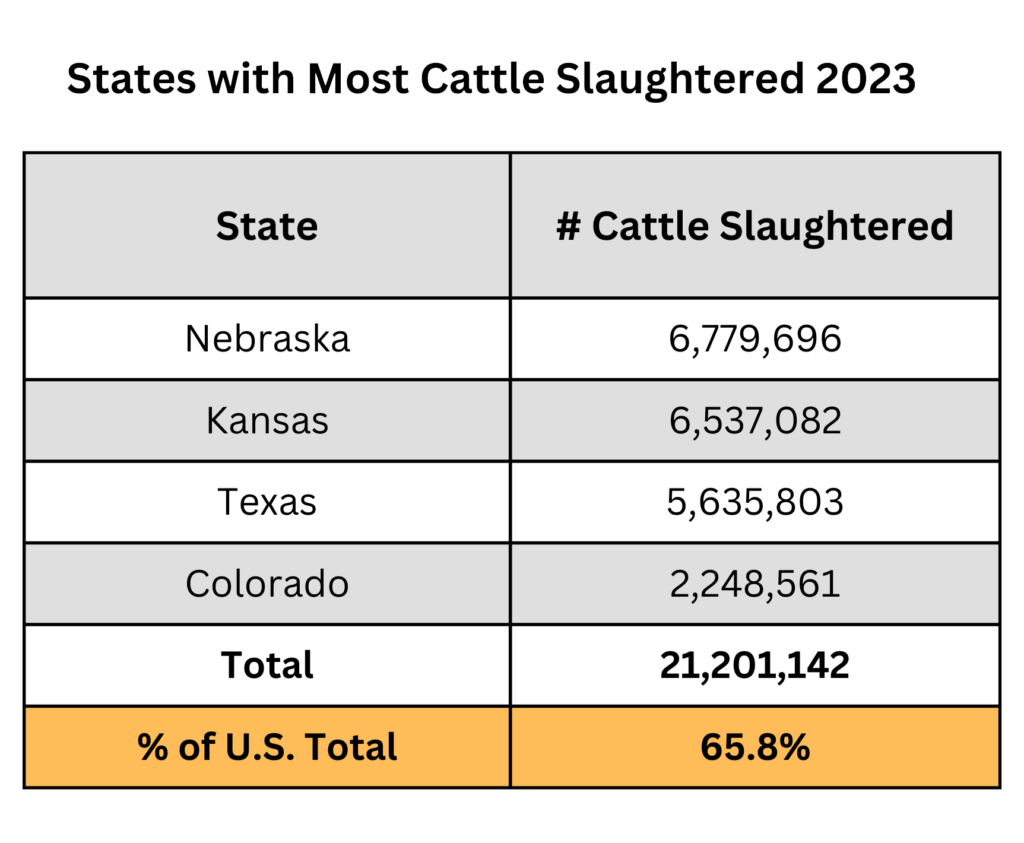
USDA NASS (2024) Poultry Slaughter 2023 Summary, ISSN: 2159-7480, p. 19.
Turkey slaughter figures are taken from USDA NASS QuickStats data (Minnesota, the top producing state, is omitted from the Poultry Slaughter 2023 Summary. The slaughter figures and percentages are given for “young turkeys” only, and do not include “old turkeys”, i.e., breeders.]
USDA NASS (2024) Livestock Slaughter 2023 Summary, ISSN: 0499-0544 p. 56. [These state totals and percentages include slaughter at federally inspected plants only.]
Livestock Slaughter 2023 Summary, p. 56. [These state totals and percentages include slaughter at federally inspected plants only and do not include calves. The 4 states that slaughter the most calves are Pennsylvania, Ohio, New York, and Wisconsin.]
Because the costs for shipping meat cuts and meat by-products are much lower than the costs of transporting live animals, slaughterhouses are usually located in areas close to where the animals are raised. Chickens are slaughtered in Georgia. Pigs are slaughtered in Iowa. Turkeys are slaughtered in Minnesota. And beef cattle are slaughtered in Texas, Nebraska, and Kansas. Most calves are slaughtered in large dairy producing states (e.g., Wisconsin, Pennsylvania, and New York) where many calves, particularly males, are considered “surplus” and are sold for veal.[1]
Ninety percent of broiler chickens are slaughtered within 60 miles of the factory farms on which they are raised. Most pigs travel less than 200 miles to the slaughterhouse.[1]
Creutzinger, K., et al., (2021). Perspectives on the Management of Surplus Dairy Calves in the United States and Canada. Frontiers in Veterinary Science, 8, 661453, p. 2.
MacDonald, J. M. et al., (2023) Concentration and Competition in U.S. Agribusiness, USDA Economic Research Service, Bulleting No. 256, pp. 28-29.
The EPA estimates that there are currently 5,055 facilities in the meat and poultry slaughter and processing industries (MPP).[1] The EPA categorizes them as follows:

Until recently, the EPA estimated that there were between 7,000 and 8,000 facilities.[2] In the process of proposing new effluent limitations guidelines and standards, the EPA refined this list to a total of 5,055 facilities.
U.S. EPA (January 2024) Clean Water Act Effluent Limitations Guidelines and Standards for the Meat and Poultry Products Point Source Category, Proposed rule, 89 Fed. Reg 4474, 4481.
U.S. EPA (January 2023) Effluent Guidelines Program Plan 15, EPA-821-R-22-004, p. 7-2. [The EPA has an interest in accurately identifying MPP facilities because they are in the process of proposing more stringent oversight for the industry under Clean Water Act regulations. Their current estimate is based on data from the USDA Food Safety and Inspection Service, along with internal data from their own Integrated Compliance Information System.]
